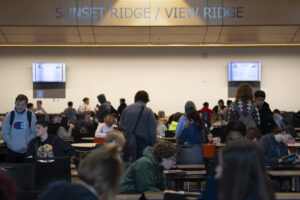A Washougal School Board member is calling for the Washougal School District (WSD) to consider tightening its protocols around the use of cellphones in school facilities during educational hours.
During the Board’s Aug. 27 meeting, Jim Cooper called for a workshop to discuss WSD policy 3245, which states that “telecommunications devices will be turned on and operated only before and after the regular school day and during the student’s lunch break, unless an emergency situation exists that involves imminent physical danger or a school administrator authorizes the student to use the device.”
“Research is coming out more and more on how impactful distractions are in the learning process, and how (phones are) having not only a social emotional impact on kids, but an academic impact,” Cooper said. “We could wait until the state passes a law or give us guidance, or we could lead. Our kids are the ones that are important to me, and I think it’s worth having an agenda discussion.”
Les Brown, the WSD’s director of communications and technology, told the Post-Record that interim superintendent Aaron Hansen will “work with the board president to figure out where the topics raised at (Tuesday’s) meeting fit into the schedule of upcoming meetings.”
Washougal School Board member Chuck Carpenter agreed with Cooper, saying that cell phone use in schools is “a topic that needs to be addressed.”




